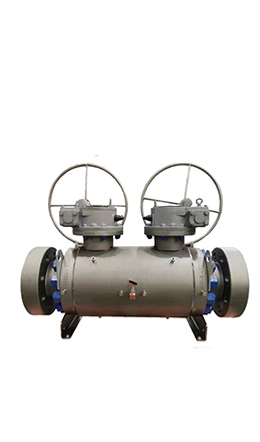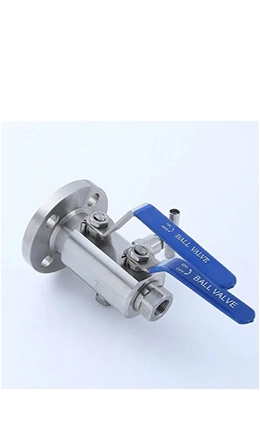The KFTE Double Block and Bleed Ball Valve combines soft seats with a metal-to-metal seal, featuring a flange-to-body connection to ensure superior, bubble-tight sealing performance even under extreme high-pressure and high-temperature conditions.
With interchangeable flange options, this valve provides exceptional customization to accommodate varying piping configurations. Designed for robust performance, it supports working pressures up to ASME B16.5 Class 2500 and can operate at maximum temperatures of 200°C.


DBB valves prioritize safety and redundancy with dual seals and leak detection, ideal for high-risk industries. SBB valves offer simpler, cost-effective isolation for less critical applications. The choice depends on safety requirements, regulatory standards, and operational needs.
1. Isolation Barriers:
DBB: Features two independent sealing mechanisms (two seats or valves) with a bleed port between them. Provides dual barriers against fluid flow.
SBB: Has one sealing mechanism (single seat/valve) with a bleed port downstream. Offers only a single barrier.
2. Leak Detection and Testing:
DBB: The bleed port allows operators to test the integrity of both seals. If pressure/fluid is detected in the bleed cavity, at least one seal is compromised.
SBB: Bleeding only depressurizes the downstream side; cannot verify seal integrity since there’s no secondary barrier to test against.
3. Safety and Redundancy:
DBB: Safer for hazardous applications (e.g., oil/gas, chemicals) due to redundant seals. If one seal fails, the second acts as a backup.
SBB: Higher risk if the single seal leaks, as there is no secondary barrier.
4. Design Complexity:
DBB: More complex, often integrating two seats and a bleed into a single valve body or requiring two valves in series. May be bulkier or costlier.
SBB: Simpler design, akin to a standard ball valve with an added bleed port. Compact and economical.
5. Applications:
DBB: Used in critical safety scenarios (e.g., pipeline maintenance, high-pressure systems) where dual isolation is mandated by standards like API 6D.
SBB: Suitable for low-risk tasks (e.g., draining, sampling) or where space/cost constraints exist.
6. Maintenance and Use Cases:
DBB: Enables safe maintenance (e.g., replacing downstream equipment) without system shutdown. Common in refineries and chemical plants.
SBB: Used for minor maintenance or pressure relief in non-critical systems.
A DBB ball valve ensures dual isolation and safe pressure relief, making it essential for hazardous environments where redundancy, leak detection, and operational safety are critical.
Core Functions:
1. Dual Isolation (Block):
Two Sealing Barriers: The valve has two seating surfaces (upstream and downstream). When closed, both seats isolate the flow path, creating redundant barriers against the process fluid.
Bidirectional Blocking: Blocks fluid flow in both directions, preventing leakage from either side of the valve.
2. Pressure Relief (Bleed):
Bleed Port: Located between the two seats. Depressurize the cavity between the seals. Drain/vent trapped fluid (e.g., during maintenance). Test Seal Integrity: Check for leaks in either seat by monitoring pressure or fluid presence in the bleed cavity.
3. Safety Assurance:
Redundancy: If one seat fails, the second seat acts as a backup barrier.
Leak Detection: Detects seat leakage by bleeding the cavity (critical for hazardous or toxic fluids).
Prevents Cross-Contamination: Isolates sections of a pipeline during maintenance or repair.
Key Applications:
1. Pipeline Maintenance: Safely isolate sections of a pipeline for repairs without shutting down the entire system.
2. High-Pressure Systems: Used in oil/gas, petrochemical, and chemical industries where dual isolation is mandated.
3. Fluid Sampling/Draining: Bleed port allows safe sampling or draining of trapped media.
4. Pressure Testing: Verify seat integrity (e.g., in compliance with API 6D standards).
Key Features:
1. Redundant Seals: Two independent seats for fail-safe operation.
2. Bleed Valve Integration: Built-in port for pressure relief and testing.
3. Bidirectional Sealing: Blocks flow from either direction.
4. Compliance: Meets industry standards (e.g., API 6D, ISO 14313) for safety-critical systems.
